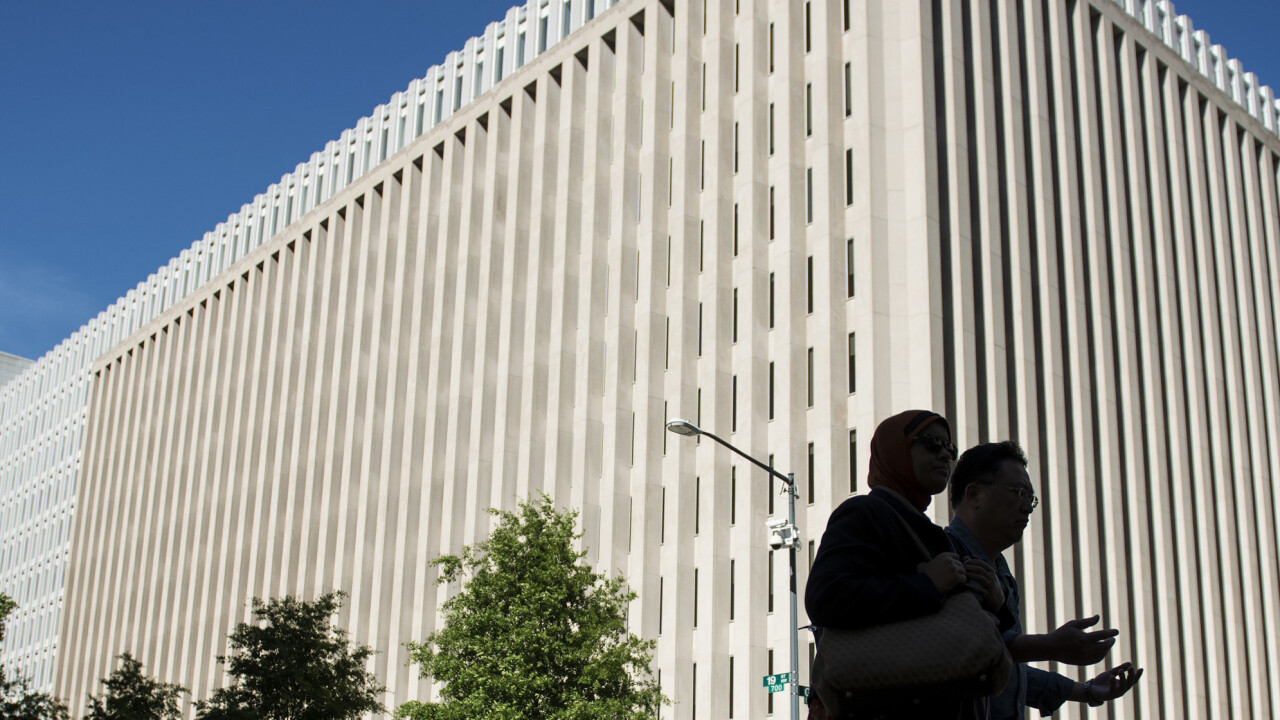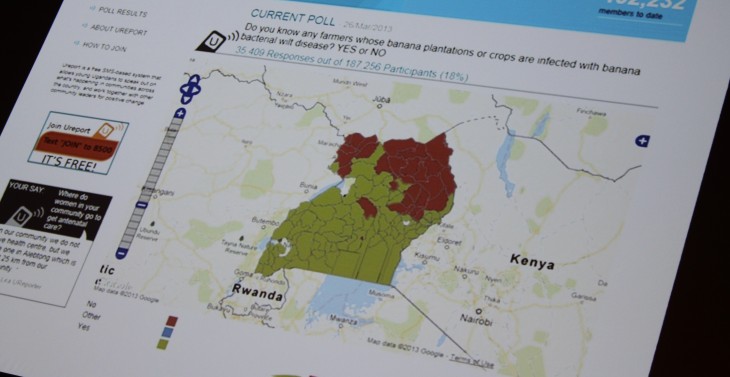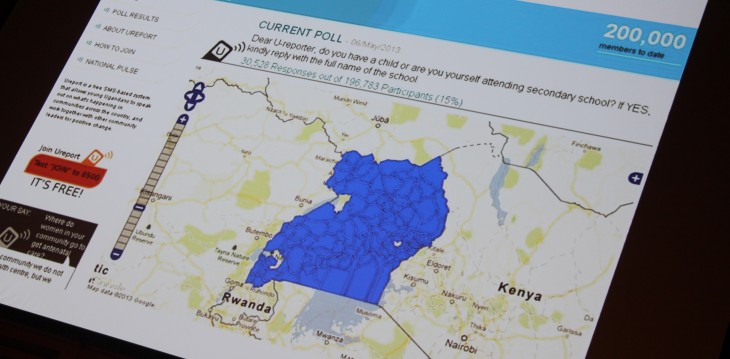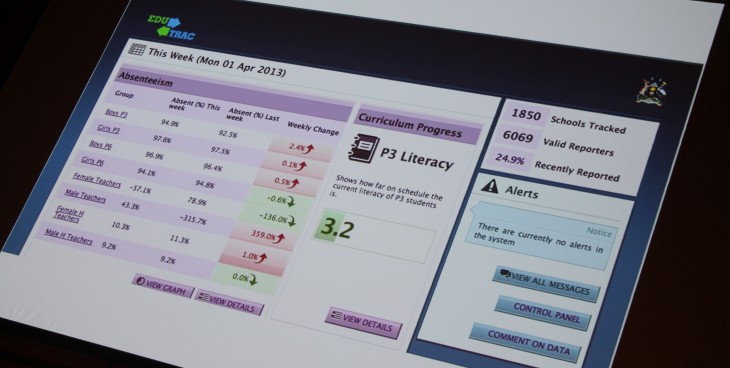
Founded in 1944, the World Bank is, as its name alludes to, a global financial institution geared towards reducing poverty in developing countries.
But as with many pre-Internet organizations, transitioning from the analog world order into one fit for the digital age is something of a challenge.
As such, Chris Vein, Chief Innovation Officer for Global Information and Communications Technology Development, at The World Bank, took to the stage at The Guardian’s Activate London: 2013 conference today to outline some of the key issues they’re facing. And, ultimately, how it’s tapping technology and open data to tackle one of the oldest problems known to man.
Vein joined the World Bank a little over six months ago, having previously served in the White House as one of its chief technologists.
In essence, Vein’s role is not only to help the World Bank embed technological innovations across its operations, but also ensure that the benefits of this are seen in projects throughout its client countries.
“In an analogue world, policy dictates delivery. In a digital world, delivery informs policy.”
Open development

“Development agencies are not exactly thought of as nimble organizations,” says Vein. “I think one of the most exciting things about the open movement, whether it be open government, open data or open innovation, is that transparency enables greater participation across governments and the development process, but also that it enables collaboration.”
More specific to The World Bank, Vein says that the organization has been tasked by its new President with focusing on extreme poverty – in other words, those who live on $1.25 a day or less. This equates to roughly 2.1 billion people around the world, which is a staggering figure.
As part of the longer-term plan to eradicate poverty by 2030, “or bring it down to about 3%”, the challenge is to move far beyond the analogue methods of yore where things were guided from the top up, to a digital world where things are more user-centric.
“We need to flip the paradigm and not work in the old step-by-step process,” says Vein. Systems and policies should, according to Vein, come after they’ve actually started working with those looking to benefit from such development projects.
With that in mind, Vein highlighted eight principles of open development he feels should underpin any modern-day development projects of the kind The World Bank engage in.
User-centered
This is perhaps the fundamental principle, touched on already by Vein.
“The idea is that we start with the user and really dig deep to understand the specific needs and develop solutions together, rather than just doing what development agencies often do – presenting solutions as a top-down approach. We need to start with a bottom-up approach,” says Vein.
Citing a previous project, which looked at agriculture, and more specifically women in agriculture, Vein says the ultimate remit was to figure out how the organization could improve on its delivery of services.
“In six months, we talked to every person in a village to understand their particular needs, and the challenges they faced,” he says. “It was intended for users to give feedback to The World Bank about what was and wasn’t working in a particular project.”
Data-driven
Though a user-centric approach is a base-level principle, being data-driven was cited as the most disruptive facet of The World Bank’s push to bring its methodologies into the digital age. “Technology is giving us the option to have real-time data upon which we can make real-time decisions,” he says.
“The Bank can take up to seven years to do a loan. It takes that long to go through the various processes to mitigate risks.”
However, this figure relates specifically to the old, analogue world order. With digital, and real-time data, the process can be significantly boosted to make any loan less risky, with countries, individuals and, importantly, The World Bank able to see exactly what needs addressed and the effect any cash outlay is having.
Pointing to “one of the most exciting projects” he’s been involved with in his short tenure at The World Bank, Vein highlighted an initiative in Uganda designed to curb a crop-killing disease.
“Uganda is the second largest producer of bananas in the world, and it also has an 80% use of bananas for its own internal food-basket. Bananas are hugely important to the country and the people,” says Vein.

“The difficulty is, however, there’s a disease that’s hacking away at banana plants, with the potential for wiping it out.”
Working in cahoots with UNICEF, The World Bank targeted 200,000 Ugandans, sending them an SMS that said: “Do you know of anyone who has, or has suffered from, this banana growth disease. Yes or no?”
Within 24 hours, they’d gleaned 45,000 responses and were able to map all those responses through geo-coding and create the first ever map of the entire country which helped illustrate the extend to which this disease was attacking banana plantations.
“This had never been done before,” adds Vein. “Then, within the next 24 hours, we sent another SMS asking if they wanted more information on how to solve this problem. More than 35,000 people responded with an affirmitive, and were able to correctly tell them how to stem the problem.”
Reusable
“Many organizations, development-based or otherwise, try to solve problems individually,” says Vein. “Over and over and over again – we don’t really think about how we can re-use pieces of those projects to speed up development.”
What this refers to, essentially, is not attempting to reinvent the wheel. There may be data, methodologies or other elements of one initiative that can be directly tapped for another one, and this ties directly in with the sustainability of a project.
Sustainable
How can development organizations actually sustain a project for the long-term, beyond its initial launch? “It’s about taking a modular approach to setting up projects, based on open source and open data platforms,” says Vein. “When something is created, it doesn’t have to be recreated as things evolve – you can invite the world in to help keep the solutions going and moving forward.
Another example cited was in identifying problems in schools through SMS. The project, called U-Report, solicits citizen feedback via SMS polls, then broadcasts the results through various media channels, including radio, newspapers and websites.

So that new-fangled iPhone or Android smartphone isn’t required – simple featurephones are sufficient to carry out polls and garner data at scale.
Scalable
In what Vein referred to as Pilot-itis – a fixation with pilot ‘test-bed’ projects that tend to encourage short-term thinking. While he says that this can achieve some degree of success, the world is littered dead or unfulfilled projects. Simply put, many pilot projects are doomed from the start, because they’re not given enough consideration for the long-haul. “They lack scalability,” says Vein.
In another example of a UNICEF-World Bank tie-up, a project call Edu Trac tapped mobile phones and SMS technology to help scale the project across Uganda, with a view to helping them understand the state of schools. This included things like attendance, literacy and so on.

It gives parents, students and teachers the opportunity to text, track and monitor what’s going on with education in any country.
Ecosystems
“From my days in the White House, I can tell you that ‘releasing data and people will come’ doesn’t actually work,” says Vein.
“You need to worry about the ecosystem, all the players, the organizations in a particular area, and ensure you’re working with every single one of them to understand the value of what you’re trying to do and tools to bring to the solution,” he continues.
Borrowing heavily from Code for America, it seems, Code 4 Kenya is another project from The World Bank, designed to build open data ecosystems.
“In Code 4 Kenya, we invite journalists, software developers and others to work with the government to solve and address some of the problems,” says Vein. “This helps build an ecosystem so journalists understand the inner-workings of government, the challenges that are there so they can actually report on, rather than simply what they’re being told. It’s about giving them first-hand knowledge.”
Open
Another interesting example that shows how data can be quickly gathered and used involves the mapping of a huge slum area in Kenya, called Kibera.
The government had no idea how big this particular slum was, what it looked like, or where all the roads or housing was. But it was thought to house anywhere between 200,000 and a million people.
Simply by using people in the community, they were able to map what the slums looked like for the first time.

The Map Kibera project trained residents to create their own map, using tools such as OpenStreetMap with partnerships with local organizations.
Security and privacy
To conclude, Vein says that security and privacy should always be a top priority in any development project.
“That, however, is not always the case,” he notes. “So as we move through these technology-based solutions, to the various development problems we have, this becomes very important for us. We are very concerned, and actually work with our client countries, to ensure data becomes anonymous and security is always represented.”
Certainly, it seems as though technology and open data is capable of achieving many things that simply weren’t possible before. Rather than taking a ‘we know best’ approach, by working from the ground up and working back the way to find a solution, this could create whole-new paradigms.
“Development shouldn’t and can’t solve all problems,” says Vein. “Development is best when it creates the foundation for people, like you, to work with and collaborate in a transparent way, to come up with the solutions to eradicate poverty.”
Header image credit: BRENDAN SMIALOWSKI/AFP/Getty Images
Get the TNW newsletter
Get the most important tech news in your inbox each week.




